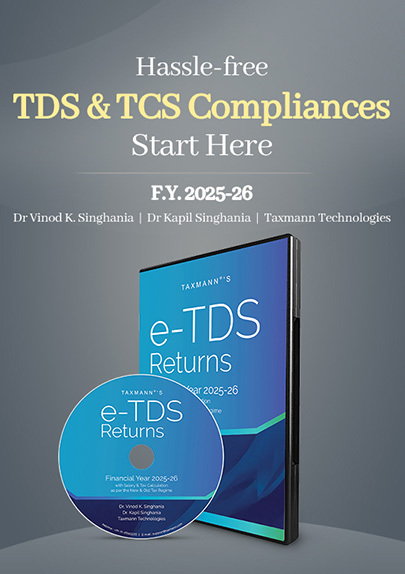[Opinion] Unveiling GAAR | A Ramsay Legacy
- Blog|News|International Tax|
- 3 Min Read
- By Taxmann
- |
- Last Updated on 25 January, 2025

Piyush Baid & Prashant Kr Jha – [2025] 170 taxmann.com 580 (Article)
The landscape of tax avoidance was forever altered particularly in the commonwealth and allied jurisdictions by the landmark case of W. T. Ramsay Ltd. v. Inland Revenue Commissioners, Eilbeck (Inspector of Taxes) v. Rawling. Decided in 1981, this case centered around a company that employed a complex series of transactions to artificially generate losses to offset a capital gain. The House of Lords, in a pivotal ruling, determined that the scheme should be evaluated holistically, disregarding the individual steps that lacked commercial substance. This decision gave rise to the Ramsay principle, which empowers courts to look beyond the superficial structure of a transaction and assess its true purpose and economic substance when determining tax liability. The Ramsay principle, in essence, states that if a transaction has pre-arranged artificial steps for tax avoidance, the courts should disregard the individual steps and tax the transaction as a whole.
The Genesis of GAAR with respect to the Ramsay Principle
The global effort to curtail tax avoidance represents an ongoing challenge for governmental authorities. As taxpayers engage in increasingly complex tax planning strategies, tax authorities must respond by adapting and implementing novel mechanisms within the intent of legislation to safeguard the integrity of their respective tax regimes. This article purports to examine the progression of the Ramsay principle, a judicial doctrine originating in the United Kingdom, into General Anti-Abuse Rules (GAAR), a general statutory framework designed to combat tax avoidance. The author attempts to examine the core elements of the Ramsay principle, its implementation across various jurisdictions, and its impact on the development of GAAR.
The Ramsay principle emerged from a series of landmark decisions by the House of Lords in the UK in the early 1980s. These cases involved companies that had engaged in elaborate tax avoidance schemes involving pre-arranged, artificial transactions to generate tax losses. The House of Lords ruled against the companies, emphasizing the need to consider the overall economic substance of the transactions rather than their individual steps.
The Ramsay principle essentially states that when a transaction comprises a series of pre-arranged artificial steps that lack any genuine commercial purpose other than tax avoidance, the transaction should be viewed holistically, and the tax consequences should be determined based on the overall economic substance rather than the individual steps. This principle is not a standalone anti-avoidance rule but rather a principle of statutory interpretation. It emphasizes a purposive approach to construing tax legislation, requiring courts to consider the intention of Parliament when enacting a particular provision and to apply the law to the economic reality of the transaction.
Admittedly, it has had a profound and pervasive impact on the evolution of General Anti-Avoidance Rules (GAAR) across numerous jurisdictions. While not always explicitly codified within GAAR statutes, the principle’s core tenet – prioritizing the economic substance of a transaction over its legal form – has significantly influenced the judicial interpretation and practical application of GAAR provisions. Courts, when assessing whether to invoke GAAR to counteract tax avoidance schemes, frequently rely on the Ramsay principle to scrutinize the genuine purpose and economic reality of the transactions in question, thereby preventing taxpayers from circumventing tax obligations through artificial or contrived arrangements that lack commercial substance. This principle, therefore, acts as an implicit guiding doctrine, informing how GAAR is understood and enforced in practice, even in the absence of express statutory incorporation.
The Ramsay principle has been further refined and clarified in subsequent cases, such as IRC v. Burma Oil Ltd., Furniss v. Dawson and Carreras Group Ltd. v. Stamp Commissioner, with foundations to GAAR added in A Chappell v. HMRC solidifying its position in tax law and influencing the development of anti-avoidance legislation in other jurisdictions.
Click Here To Read The Full Article
Disclaimer: The content/information published on the website is only for general information of the user and shall not be construed as legal advice. While the Taxmann has exercised reasonable efforts to ensure the veracity of information/content published, Taxmann shall be under no liability in any manner whatsoever for incorrect information, if any.

Taxmann Publications has a dedicated in-house Research & Editorial Team. This team consists of a team of Chartered Accountants, Company Secretaries, and Lawyers. This team works under the guidance and supervision of editor-in-chief Mr Rakesh Bhargava.
The Research and Editorial Team is responsible for developing reliable and accurate content for the readers. The team follows the six-sigma approach to achieve the benchmark of zero error in its publications and research platforms. The team ensures that the following publication guidelines are thoroughly followed while developing the content:
- The statutory material is obtained only from the authorized and reliable sources
- All the latest developments in the judicial and legislative fields are covered
- Prepare the analytical write-ups on current, controversial, and important issues to help the readers to understand the concept and its implications
- Every content published by Taxmann is complete, accurate and lucid
- All evidence-based statements are supported with proper reference to Section, Circular No., Notification No. or citations
- The golden rules of grammar, style and consistency are thoroughly followed
- Font and size that’s easy to read and remain consistent across all imprint and digital publications are applied



 CA | CS | CMA
CA | CS | CMA
